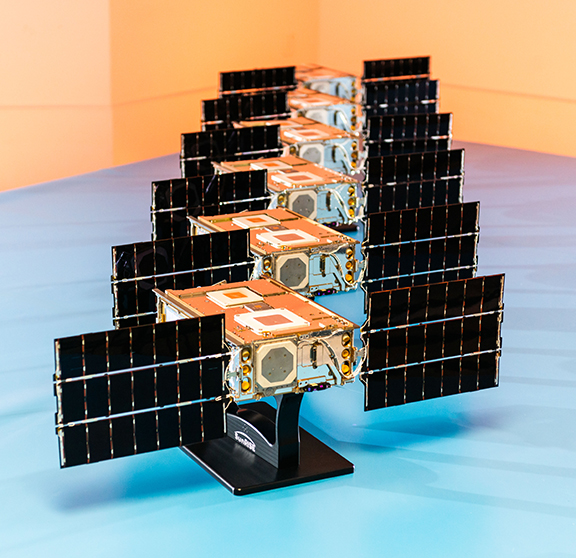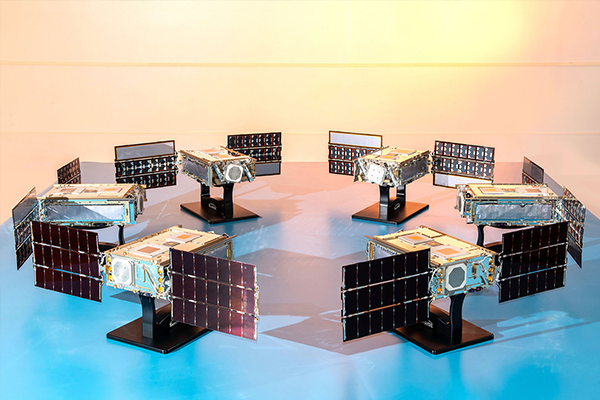Originally published by CLASP
In a mission led by Principal Investigator Justin Kasper, Ph.D., from University of Michigan Climate and Space, six small satellites (or SmallSats) are now ready for launch in the Sun Radio Interferometer Space Experiment (SunRISE) Mission. Under the management of NASA’s Jet Propulsion Laboratory, this mission will study the physics of explosions in the Sun’s atmosphere in order to gain insights that could one day help protect astronauts and space hardware from showers of accelerated particles.

Mission members completed construction in November of the six identical cereal box-size satellites, which will go into storage as they await their final testing and ride to space. According to the press release, SunRISE will launch as a rideshare aboard a United Launch Alliance Vulcan rocket, sponsored by the United States Space Force (USSF)’s Space Systems Command (SSC). After the SmallSats are launched in 2024, these six small satellites, or SmallSats, will work together to act like one giant radio antenna in space.
“This is a big moment for everyone who has worked on SunRISE,” said Jim Lux, in a press release. He is the SunRISE project manager at NASA’s Jet Propulsion Laboratory in Southern California, which manages the mission for the agency. “Challenges are expected when you’re doing something for the first time, and especially when the space vehicles are small and compact. But we have a small team that works well together, across multiple institutions and companies. I’m looking forward to the day when we receive the first images of the Sun in these radio wavelengths.”
SunRISE is a Mission of Opportunity under the Heliophysics Division of NASA’s Science Mission Directorate. Missions of Opportunity are part of the Explorers Program, managed by NASA’s Goddard Space Flight Center in Greenbelt, Maryland. SunRISE is led by Dr. Kasper at the University of Michigan in Ann Arbor and managed by NASA’s Jet Propulsion Laboratory in Southern California, a division of Caltech in Pasadena, California. Utah State University’s Space Dynamics Laboratory built the SunRISE spacecraft. JPL, a division of Caltech in Pasadena, California, provides the mission operations center and manages the mission for NASA.

